Array Labs is developing radar satellite clusters for the first real-time, high-quality 3D Earth model, enhancing affordable 3D data use in AR/XR, defense, climate, and insurance.

Greetings from Array Labs, where we had another busy month.
We significantly enhanced our rail-mounted, motorized space radar test range; ruggedized the rig; developed a multi-static radar system; graduated from creating basic 2D images to full 3D captures; and integrated all of our hardware into a road-ready radar that survived a 1,600-mile, there-and-back journey across multiple state lines. In the last two weeks, we also attended our first space conference as a team; hosted 120+ space engineers, Pentagon personnel, entrepreneurs, and students at an Array Labs hardware demo, and were featured in TechCrunch.
Let’s get started…
Last time: In our first engineering field note—Road to Radar—we told the story of how we went from a CAD model to a working radar in three months. We began by breathing life into our 16-foot, bare-metal rig, achieved first movement on June 25, and then started collecting radar data and forming images less than two weeks later.
When we last signed off, we told you our short-term focus was on “moving from a single-channel radar system up to an eventual 32-channel system, which will allow us to move from 2D imagery up to a full 3D perspective.”
Mission accomplished.
A 3D Radar Roars to Life

We’re happy to report that in the last month, we’ve successfully moved from a single-channel, 2D radar to a full 3D imaging system, complete with 32 independent radar channels, four synchronized FPGAs, and 64 completely independent antennas.
The two big lifts here involved:
- Synchronizing the FPGAs and getting them to work in harmony with each other
- Processing the huge increase in data that we’re now regularly generating
We also overhauled our software infrastructure, tightened the integration between our test suite and FPGAs, and made more efficient use of on-board memory to handle the massively increased data throughput.
.jpg)
In addition to the massive changes on the electrical side, we made huge strides on the mechanical side of things as well.
When we successfully collected our first 2D images in July, it was a chaotic process, with cables strewn about and cords going every which way. While the electrical and radar imaging teams worked hard to add boards and antennas and improve our image formation software, the mechanical team worked around the clock upgrading the rig. We built and attached enclosures for the FPGAs, motor control, and safety systems; designed and installed cable guides, emergency stops, and flooring; added a battery-powered electrical system; and generally mated everything together.
Gradually, the rig transformed into a road-mobile, self-contained test range—a true 3D MVP.
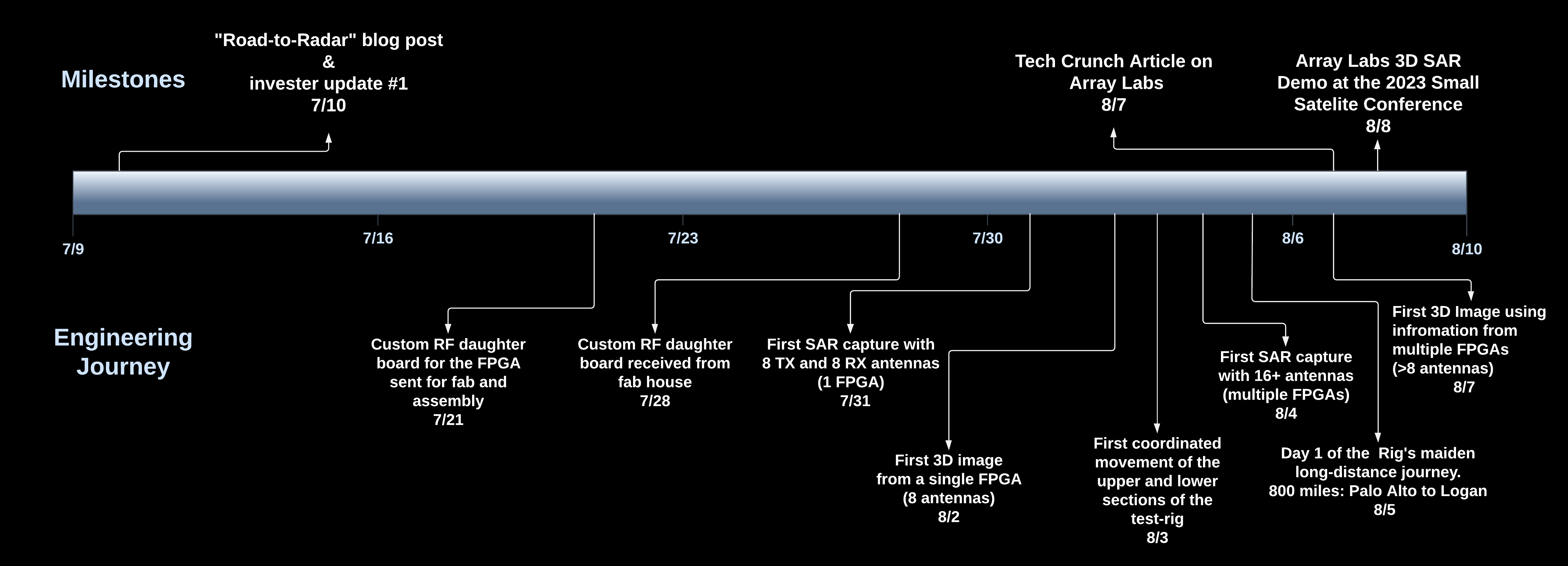
We Have an MVP
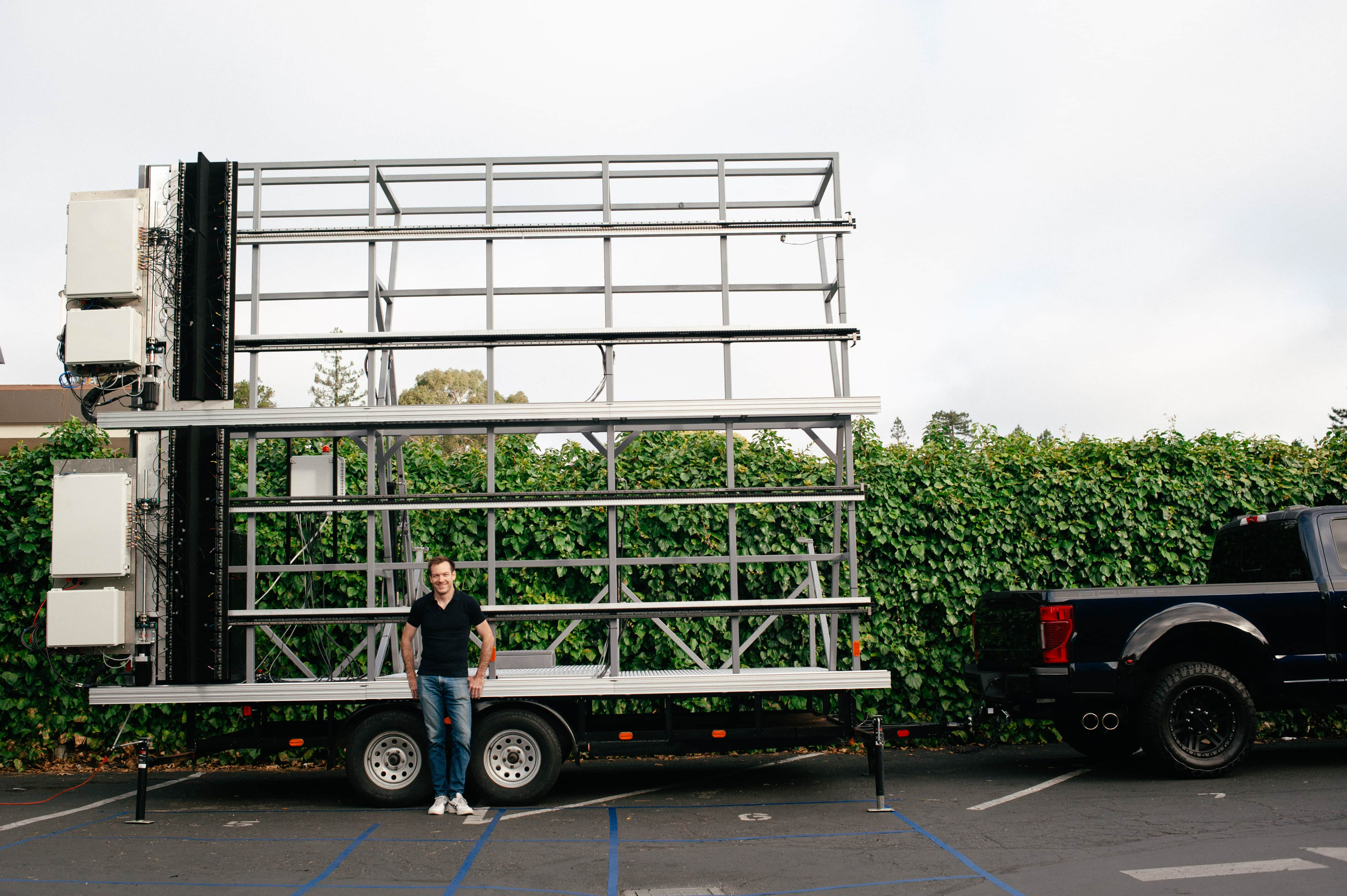
So, what exactly did we build, and how does it work?
A bit of background is helpful: synthetic aperture radar (SAR) works by collecting radio frequency pulses transmitted and received from a moving platform (satellites, in our case). Unlike most single-channel, two-dimensional SAR systems, our concept makes use of multiple, independent satellites, which fly in formation and send and receive pulses simultaneously and cooperatively. This cooperative, simultaneous imaging process is what allows us to create high-resolution 3D imagery in a single pass.
In order to test this process without launching satellites into space, we built a multi-channel radar system that physically moves a group of antennas along an equivalent trajectory as our satellites. Every independent radar channel simulates the effect of a single formation-flying satellite, so our current 32-channel system can simulate the performance of a cluster of 32 satellites.
This system allows us to test out all of our radar algorithms in a controlled environment, so when we finally deploy our satellites in space, we know that they’re going to work.
An explanation on what you’re seeing above, courtesy of Arun, one of our founding engineers:
“You have multiple transmit antennas and multiple receive antennas all working together. A single antenna transmits a pulse, and then all antennas receive echoes from the scene. Each antenna is in a different position, so each one has some information about the spatial information content in the scene we’re imaging. And then a different transmit antenna transmits, and then all receive antennas receive. And this process continues as the platform moves until all transmit antennas and receive antennas have studied the scene from various locations along the track. Combining all of the received information from all of the antennas at all times along the trajectory enables us to create a high-fidelity 3D reconstruction of the scene being imaged. ”
Here’s a bit more detail on each of the major subsystems:
Motion Control: Our mechanical actuation system consists of two drive motors for moving the antennas, as well as a pair of hydraulic actuators that allow the system’s transition between retracted and deployed configurations. The compact, retracted configuration is used for transport, while the fully deployed configuration stretches over 20 feet tall and is used for data collection.
Power: We integrated an onboard battery system to remove dependencies on generators or external electrical connections. Gone are the days of running massive extension cords across our outdoor test range in Palo Alto, and for that, our engineers (and neighbors) are grateful!
Componentry and compute: The rig features an array of enclosures, which house the breakers and switches for our safety systems, on/off functions, and power management; the motor controller electronics; and the RF electronics and FPGAs.
.jpeg)
Per our hardware lead, Max:
"What helped us most across this most recent sprint was accurately scoping out the minimum requirements for us to have a fully working 3D radar system. We only went after those. We didn’t slap on any extra LEDs, fancy signs, or additional bells and whistles. I'm happy with what we did there because I think we could have easily gotten sidetracked and given ourselves an extra week of work.”
Seeing in 3D
So, what does a 3D image look like?
If a picture is worth 1,000 words, then maybe this GIF is worth a million:

What you’re looking at is a multi-static, 3D SAR image. Let’s break that down piece by piece:
- Multi-static = Multiple spatially diverse radars working simultaneously and in conjunction with one another.
- 3D = The world we live in has width, height, and depth. Unfortunately, humans largely haven’t been able to transcend the second dimension with sensors that see, sense, and image Earth from space.
- SAR = A synthetic aperture is a large antenna that's synthetically created by moving a smaller antenna along a path and combining the data it collects at different points. Today, our SAR runs on our rig’s rails. Tomorrow, it will run in space.
As you might imagine, a lot had to happen behind the scenes to bring the multi-static platform and 3D construction capabilities online, which represents a substantial level-up from the 2D SAR images that we previously shared.
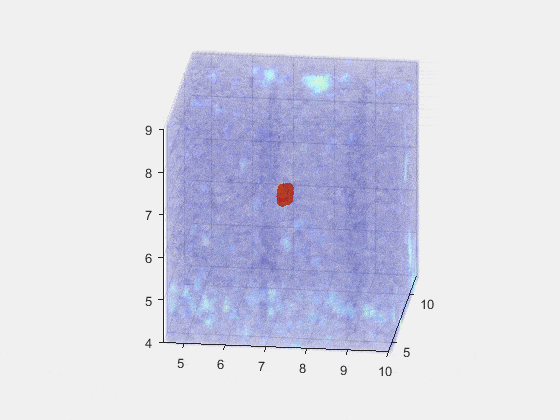
And Finally…We Head East
A few months ago we committed to sending the team (and our radar) to the 2023 Small Satellite Conference in Logan, Utah.
This was the perfect time and place for us to make our debut: a hardware demonstration held after the conference proceedings. For the uninitiated, the Small Satellite conference is the largest conference in the world for, well, small satellites. It’s an incredibly unique opportunity to tell the world about what we’re doing, recruit engineers, engage with vendors, and demonstrate our recent progress for commercial and defense customers.
By committing ourselves to this event, we created a forcing function for ourselves to execute on a highly ambitious—but doable—development timeline.
At the start of the summer, this may have seemed like an impossible mountain of work—building a synthetic aperture radar from scratch, scaling to 64 antennas, planning and promoting a major event, ruggedizing the rig, transporting it across multiple state lines… the list goes on.
We may have pulled longer hours in the run-up to SmallSat, but the crew rose to the occasion.
To relive our journey east, drag your cursor (or thumb) across this interactive map:
The Rig Passed the Vibe Check.
“12 hours on the highway is no joke for any system. I mean, this isn't wrapped in Styrofoam, right? It's not in a Pelican case. We're not hand-carrying this,” Max said. “Usually, prototypes are bundles of wire held together with hot glue and hope. And they typically wouldn’t survive this kind of trip unscathed.”
In spacecraft engineering, a vehicle undergoes vibration testing to simulate the shakes, rattles, and rolls that it may experience in real-life orbital conditions. Internally, we took to calling our road trip to and from Utah the company’s first, unofficial “vibration test.”
The multi-thousand pound rig held up just fine. Our 3D radar was ready to rock come happy hour o’clock.
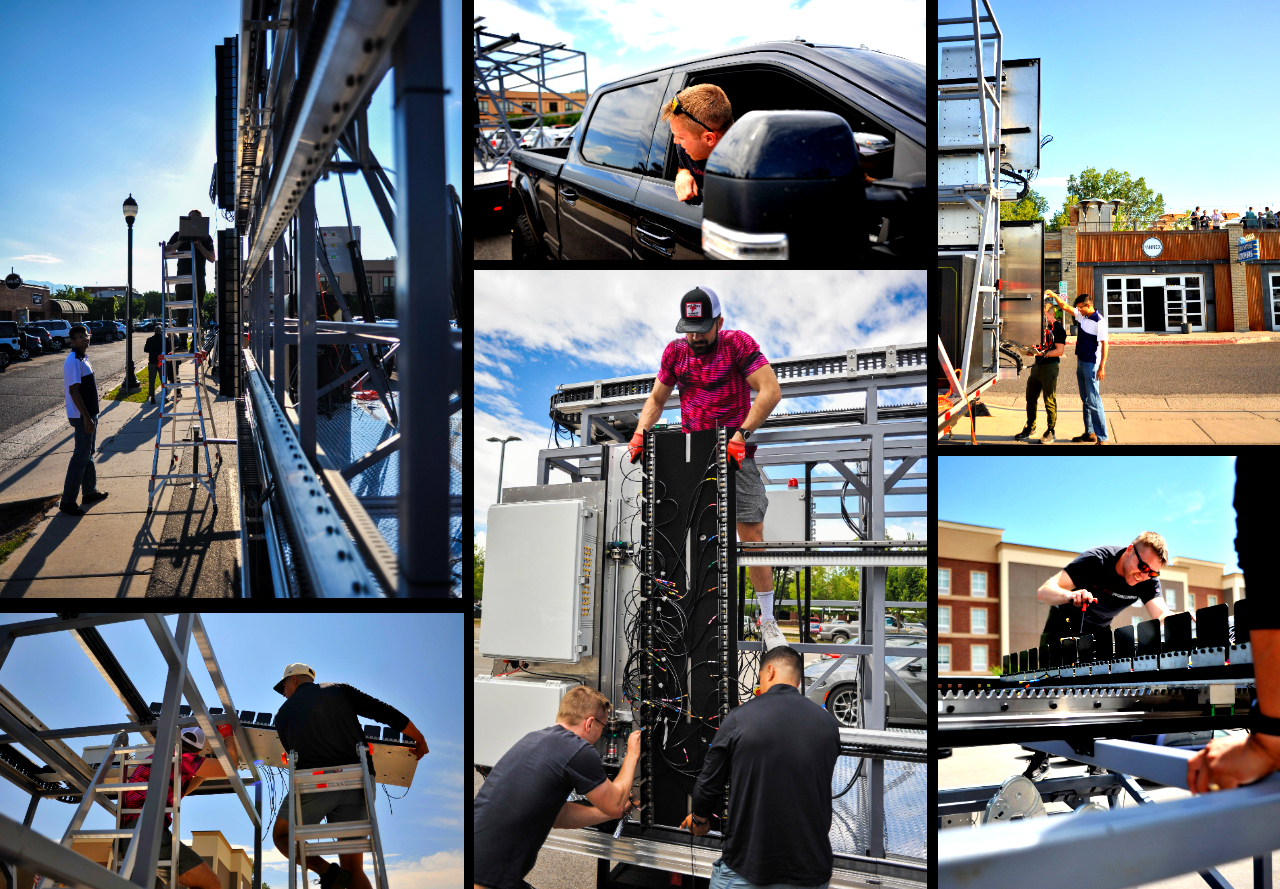
Happy Hour x Hardware Demo
Last week, Logan represented a special moment for Array Labs.
We gave attendees (and a few very confused passersby) a close-up look at our radar test range, fully assembled and operational. Over pizza and drinks, our guests were able to experience what we’re building, and see our 3D radar system up close and personal.
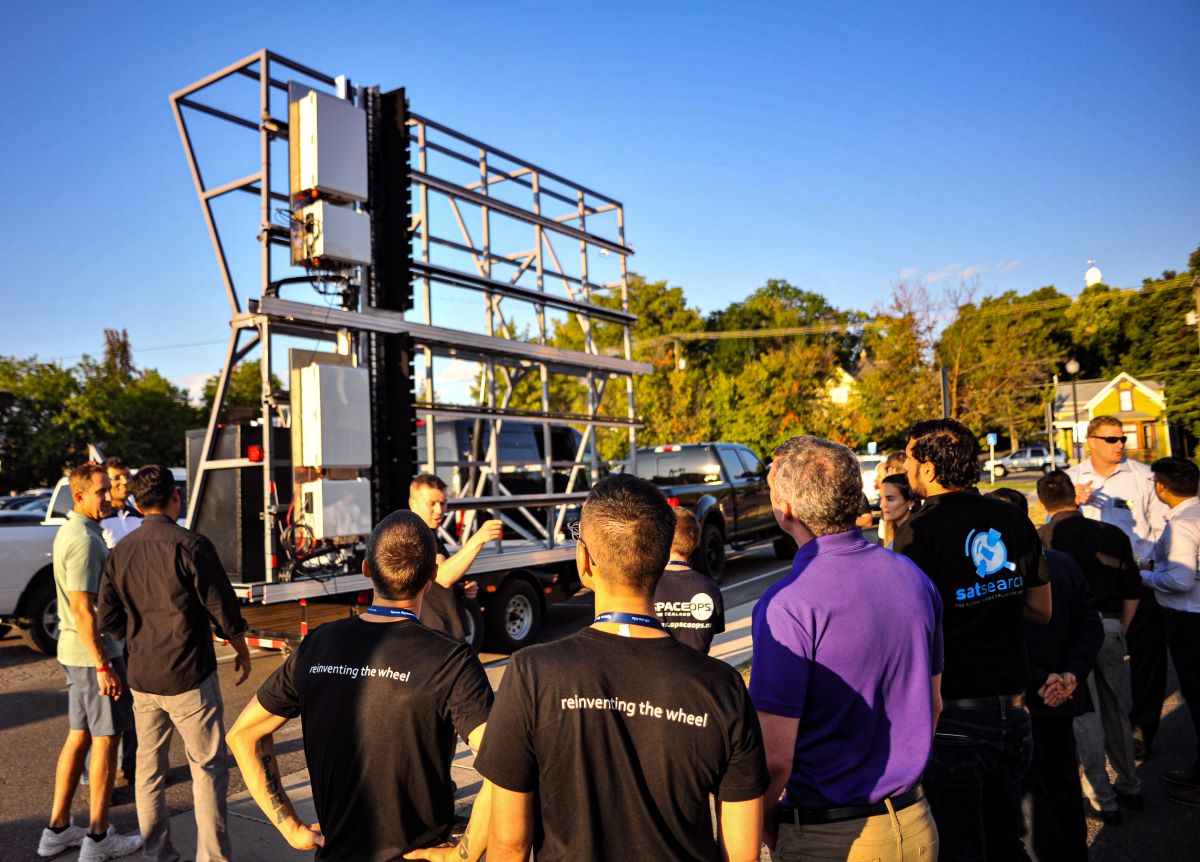
Turnout exceeded our expectations, with 120+ folks getting a first-hand look at the rig whirring to life.
Our engineers fielded smart, tough questions from space executives, engineers, and students in the crowd. We traded plenty of war stories with fellow experts working in spacecraft design, RF communications, remote sensing, and the like.

As we put the rig through its paces outside, we showed off Array Labs’ satellite prototypes inside and gave a casual presentation on the software magic powering our 3D imaging efforts.
After a summer of heads-down development, it was incredibly rewarding to finally show the world everything we've poured so much energy into. We’ve been quiet for a while, so we were quite excited to finally talk about what we’re working on. The positive reception in Logan has us energized as we look forward.
What’s Next?
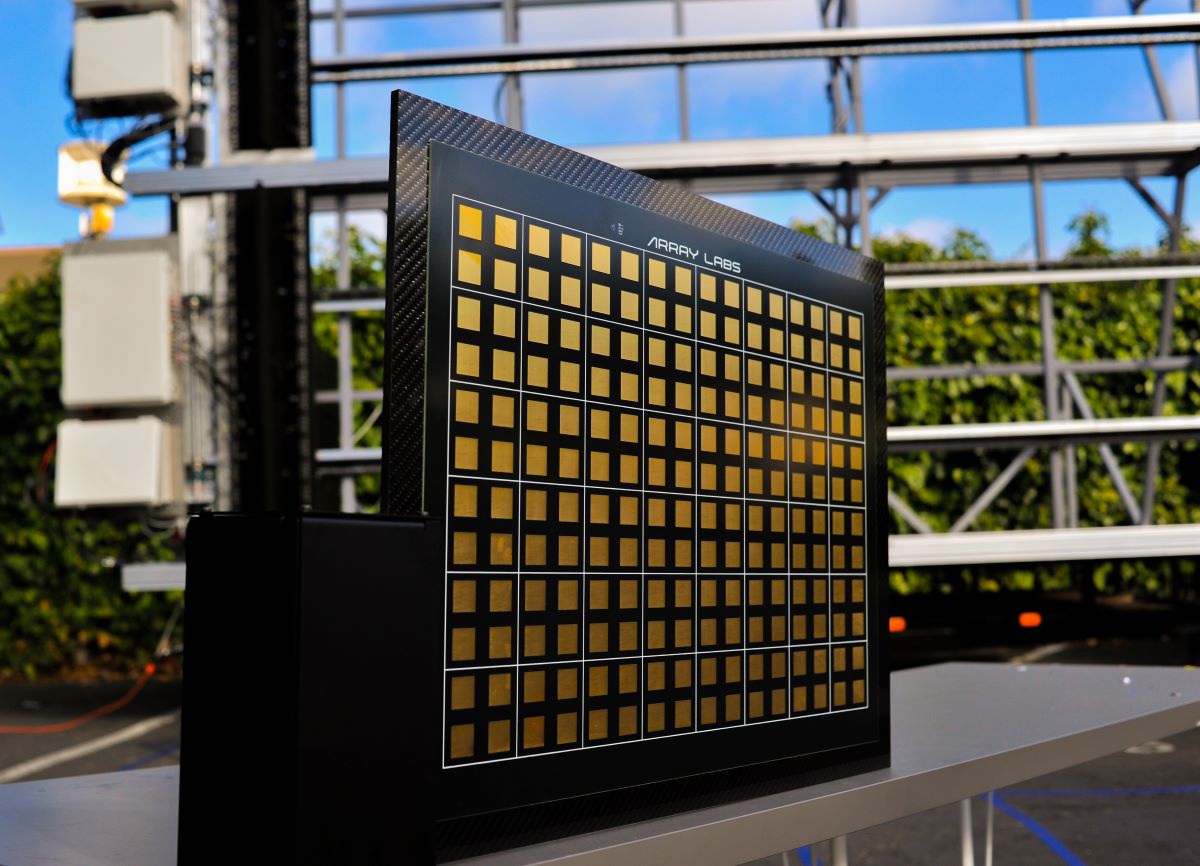
A week removed from the event, our hardware and team are back in Palo Alto, safe and sound, but now is no time to rest on our laurels.
Looking forward, we’ll focus on the following:
- Engineering changes to improve set-up (eg, assembly and disassembly). The current set-up and tear-down procedures are labor-intensive and time-consuming, so we need to improve our operations; facilitate better mounting and dismounting of the antennas and electronics enclosures in order to accelerate future field testing.
- Improved ruggedization. This will better prepare the unit for future image formation work, quicker cycle times, and frequent relocation.
- Array’s 2D → 3D code is brand new. We need to optimize our algorithms, data pipelines, and workstreams to eliminate manual steps in the acquisition and post-processing of our radar imagery.
- In addition, our RF team’s main priority area is to develop and improve autofocus algorithms that will sharpen the precision of the imagery generated by our 3D radar platform.
The step-up from 2D to 3D is a game-changer, and a major technical derisking event for Array Labs. Of course, we’re only in the early innings with the technologies and it’s just the start. A small step towards a much larger vision.
Stay tuned for more from us soon…
